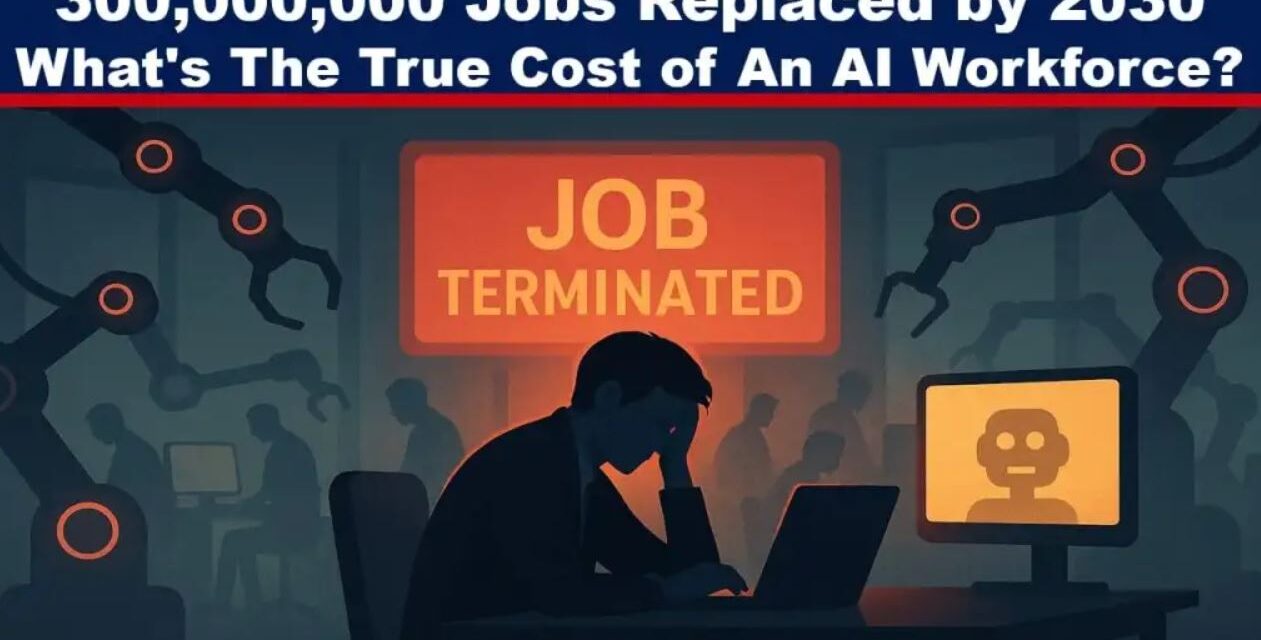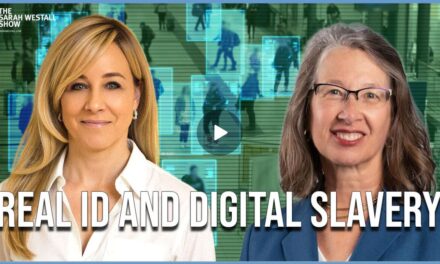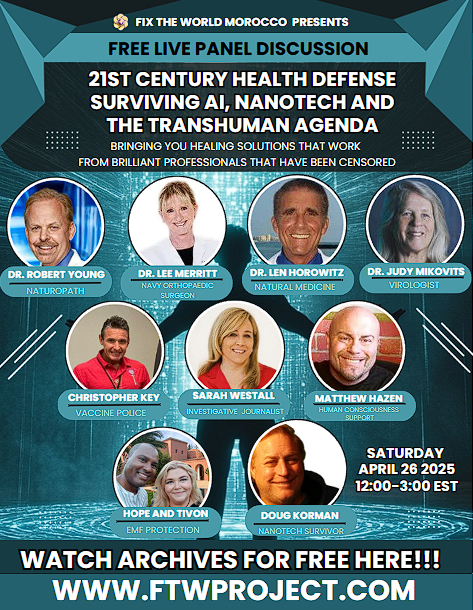Once upon a time, talk of AI stealing jobs from people was science fiction. Today, it’s real life. From graphic design and translation to copywriting and customer service, we have already seen how quickly automation can eat into work once done exclusively by humans. This trend is no longer a problem for the future – it’s already happening. What’s currently unfolding is not just a shift in productivity tools, but a total structural transformation in how the world economy functions. By 2030, the global workforce may look completely unrecognisable, with over 300 million jobs projected to be severely impacted or totally replaced in just the next few years.

No, It’s Not Coming: It’s Already Here
Current data reveals the scale at which this is already in motion:
- A 2025 poll in the UK found that 26% of workers fear AI will make their roles completely obsolete within their lifetime
- Goldman Sachs estimates that AI could severely impact, or totally replace, 300 million jobs globally by 2030
- 10% of UK university graduates in 2025 have already had to change career path due to AI threats in their original fields of choice
According to McKinsey’s 2025 analysis, 8 million workers in the UK will be affected by artificial intelligence by 2030, amounting more than a quarter of the current national workforce. Of those, 3.5 million could experience complete job displacement, with the rest seeing “significant task disruption”.
Notably, McKinsey’s report projects that the most affected groups will be women, young people, and lower-income workers, due to their saturation in fields such as retail, clerical support, and hospitality. However, health care jobs and roles in education and STEM-related fields are actually expected to grow as a result, meaning the UK’s already polarised labour market could widen further.
Once a theoretical risk, we’re now seeing real-time restructuring. Writers, junior developers, support agents, and administrative assistants are already being replaced partially or completely by automation. And this is just the beginning.
Which Jobs Are Safe, And Who’s At Risk?
Nexford University, Microsoft and the US Career Institute have conducted studies using various models – such as the “Generative AI Exposure Index” and “task susceptibility” metrics – to assess which roles are most vulnerable to the automation takeover.
High-Risk Roles:
- Data entry clerks
- Call centre agents
- Translators and interpreters
- Customer service representatives
- Retail cashiers
- Legal assistants
- Junior Software Developers
- Bookkeepers and payroll clerks
As these jobs typically rely on pattern recognition, repetitive task cycles, or templated responses, they are particularly threatened by AI’s innate abilities. For example, Nexford reports that 80-90% of call centre workflows can already be automated using conversational AI instead.
Low-Risk Roles:
- Electricians, plumbers, construction workers
- Therapists and social workers
- Nurses and healthcare assistants
- Primary school teachers
- Strategic decision-makers and senior advisors
- Creative performers (musicians, actors)
Because these roles require human presence, dexterity, creative nuance, or emotional intelligence, they are currently set to remain largely unaffected by automation – at least until it learns to replicate these traits reliably. According to the US Career Institute, these roles are likely to remain safe for the next 10 years at least.
However, AI encroachment is still taking place in the safest sectors, such as curriculum assistants in education or diagnostic tools in healthcare. The safety net may only be temporary, and only applies to specific roles.
AI Takes Our Jobs – What Happens Next?
Will we see a smaller workforce, or different work worldwide? What happens to the 300 million people whose jobs will be displaced in the next 5 years?
As with previous industrial revolutions, automation may create new roles as it destroys others. Considering existing jobs like cybersecurity architects, AI trainers, and social media managers – none of which existed just a couple of decades ago – the optimists in this space are expecting new industries to rise to absorb the surplus labour force.
There is an often overlooked aspect to think about here though. This is assuming AI doesn’t just replace tasks, but actually generates enough entirely new value to sustain mass employment. And this is where things get a bit shaky. If AI becomes competent at knowledge work and manual roles such as with the developments in robots (as per Amazon, Google et al), the existing labour force may end up fighting for fewer seats at a shrinking table.
Futurist Adam Dorr suggests that most human labour will be economically unnecessary in just 20 years’ time, as we are inevitably replaced by AI systems that can outperform us in every area. In that case, jobs may exist, but fewer people will hold them.
The True Human Costs: Identity, Inequality, Income
Beyond the question about what happens to the jobs lies a deeper thought: what happens to humans when work disappears?
Work, as much as we may not like to admit it, has never been just about wages. Structuring our time, building relationships and communities, work also gives us identity. Dorr warns that the risk isn’t just unemployment, but also social disintegration.
There’s also the concern about exacerbating inequality. High-income earners with access to elite education and reskilling will have an easier time navigating the shift than the millions without the buffer, leaving existing lower-income workers stranded emotionally and economically. Already, as reported by Nexford in 2025, 19% of displaced US workers report that AI contributed to their job loss.
McKinsey recently reported that the volume of job ads for occupations with low AI exposure dropped 21%, while those with high exposure dropped 38%. Overall, job listings are down 43% between Q1 2022 and Q1 2025, as AI implementation isn’t just replacing one person at a time – it can usurp entire teams.
Remember that this is all current data, not projections or conspiracies. People are no longer wondering whether AI will take their job, and instead identifying whether their sector is investing in upskilling or allowing them to be replaced outright by machines.
What Kind Of Future Have We Chosen?
Is this shift to an AI-based workforce saving us from drudgery, or taking away the dignity of work? AI is a tool, and who it serves best depends on how it’s used.
Supporters say that automating boring or dangerous jobs is a clear net gain, and if fewer people are forced into low-value labour, society could start moving towards creativity, leisure, and entrepreneurship. But if that’s to be the case, it needs to be consciously designed. Without deliberate policy reforming education, mental health support, and universal income, we actually risk ending up with the worst of both worlds: fewer jobs, higher equality, and no clear safety net.
The Road to 2030 and Beyond
These next few years will be decisive. Employers are already shrinking headcounts in content creation, admin roles, and customer service – entire career paths that were once secure have been destabilised. And by 2030, reports suggest we should expect:
- Increased reliance on automation in law, finance, education, and healthcare
- Pressure on government systems to manage structural unemployment
- Leaner, more competitive white-collar job market
After 2030 is anyone’s guess. The question isn’t whether or not AI will be better at most jobs, but rather how long we choose to tolerate a system in which efficiency comes at human cost. In the end, AI can’t replace everyone. But then again, it doesn’t need to – even replacing workers at the current rate is enough to trigger massive social and economic fallout worldwide.
Final Thought
We can no longer warn that AI is coming – it’s already here. The workforce has transformed, and continues to do so seemingly exponentially. There is of course potential for a better, freer, easier future, but there’s no guarantee that’s where we’re heading.
If 300 million jobs do disappear by 2030, then it’s difficult to imagine how they can all possibly be replaced so quickly. But maybe the target isn’t to reshuffle people back into the workforce – maybe we just need technologically, socially, ethically and structurally prepare for the inevitability.
Source: https://expose-news.com/2025/08/07/its-here-ai-has-already-put-300-million-jobs-at-risk-what-next/
Bitchute: https://www.bi,tchut,e.com/channel/YBM3rvf5ydDM/
Telegram: https://t.me/Hopegirl587
EMF Protection Products: www.ftwproject.com
QEG Clean Energy Academy: www.cleanenergyacademy.com
Forbidden Tech Book: www.forbiddentech.website













